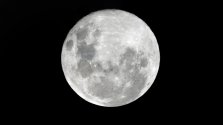The year 2019 has been off to a spectacular start ushering in three full moon supermoons.
Yesterday, people across the world witnessed the second of 2019, which showcased the closest, brightest and largest full supermoon. There won't be another as close to the Earth until 2026.
The first supermoon which was observed on January 21 coincided with a total lunar eclipse.
The third supermoon, the Worm Moon, will occur on March 21 and will be the farthest one seen for 2019.
But what exactly do we know about supermoons? Here are seven fast facts about the spectacular lunar event.
1. The term
supermoon was first coined by Richard Nolle in 1997. Its official name is ‘perigee full moon’. But honestly, it’s much easier to say supermoon. Catchy term, right?
2. A supermoon
occurs when the full moon coincides with the moon's closest approach to Earth in its orbit. The moon appears a little brighter and closer than normal, though the difference is hard to spot with the naked eye.
3. A supermoon is quite a sight to behold – it’s bigger and brighter than a full moon of average size with an area of around 15 percent more. It’s also up to 30 percent larger and brighter than a micro-moon, the smallest and furthest full moon occurring for the year. According to
EarthSky, the size difference between a supermoon and micro-moon is proportionally similar to that of a U.S. quarter versus a U.S. nickel.
4. The Earth’s oceans are affected by the extra pull of supermoons. The pull of the Moon through its full moon and new moon phases along with the Sun create larger-than-usual tides, called
spring tides. Extra high tides and low plunging tides are experienced during this time, typically following the supermoon by a day or two.
5. According to
Forbes, each full moon has a historic name linked to activities or animals with significance to the time of year it occurs, like Harvest Moon, Wolf Moon, Buck Moon and Sturgeon Moon.
6. If you missed the first couple of supermoons for 2019, don’t be sad. A series of new moon supermoons will occur when the new moon closely pairs up with perigee (the point in the orbit of the moon or a satellite at which it is nearest to the earth) on August 1 and 30, then on September 28.
7. The
closest full moon supermoon in recent time occurred on November 14, 2016. This was the closest since January 26, 1948, and that won’t be surpassed until November 25, 2034. But, keep your eyes on the skies as the closest one of this century will occur on December 6, 2052.
